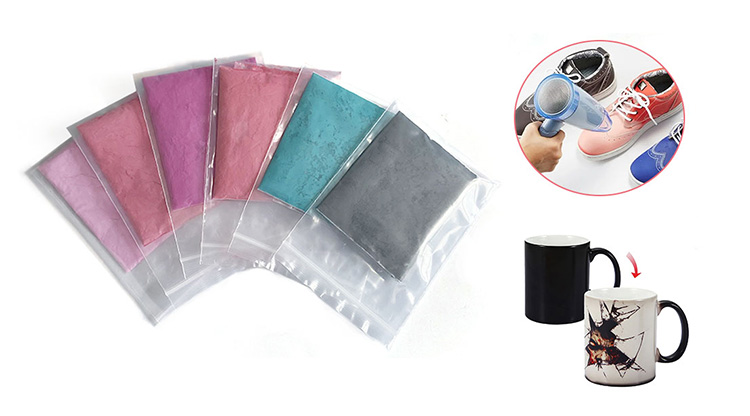categories
recent posts
Thermochromic powder can be prepared into Thermochromic ink together with resin binder.
Today, our company will mainly introduce the use of Thermochromic powder in inks, paints and coatings.
How to choose resin binder?
In varnishes, the choice of resin has a very critical effect on the color density and surface gloss of Thermochromic inks, and this effect is more significant for black inks.
Since the content of pigment in the color-changing ink is much higher than that of ordinary ink, if the resin of ordinary ink is used to prepare the color-changing ink, the viscosity of the ink will be too high to be used. Therefore, when adjusting the ink, the amount of resin can only be reduced, and at the same time, the amount of solvent should be increased to reduce the viscosity of the ink. However, it will also lead to the following results: when the ink layer of the printed matter is dry, due to the small amount of resin, it is not enough to fill the gaps between the pigments, making the surface of the ink layer uneven and dull, thus forming a diffuse reflection of light. Therefore, the apparent color density of the ink layer is low and the gray scale is high. For black ink, it looks gray but not black.
(If you print another layer of transparent varnish on the surface of this printed product, you can obviously feel that the blackness will increase)
To sum up, the preparation of Thermochromic inks must use resins with high solid content and low viscosity (low degree of polymerization or low molecular weight), so as to obtain good results.

Thermochromic powders are often used to print "cover-display" patterns. It is required that the color-changing ink layer on the surface of the printed product completely cover the underlying pattern when it develops color, and it should be as transparent as possible after reaching the decolorization temperature (complete color change, no residual color), so that The underlying patterns are clearly shown.

In this type of application, if the resin is not properly selected, "white fog" will be produced after the masking ink layer fades, making the underlying pattern unclear.
Basic reason: The optical refraction index of the selected resin and the color-changing pigment microcapsule wall material are inconsistent. Numerous microcapsules are dispersed in the ink layer to form a large number of optical refraction interfaces, just like the white opaque phenomenon formed after smashing a piece of transparent glass. Appropriate selection of resin can greatly reduce the refraction phenomenon in the color-changing ink layer, making the ink layer more transparent after decolorization.
In general, the clarity is better with alkyd and acrylic resins, and the worst with polyamide resins and nitrocellulose.
the professional team to service !